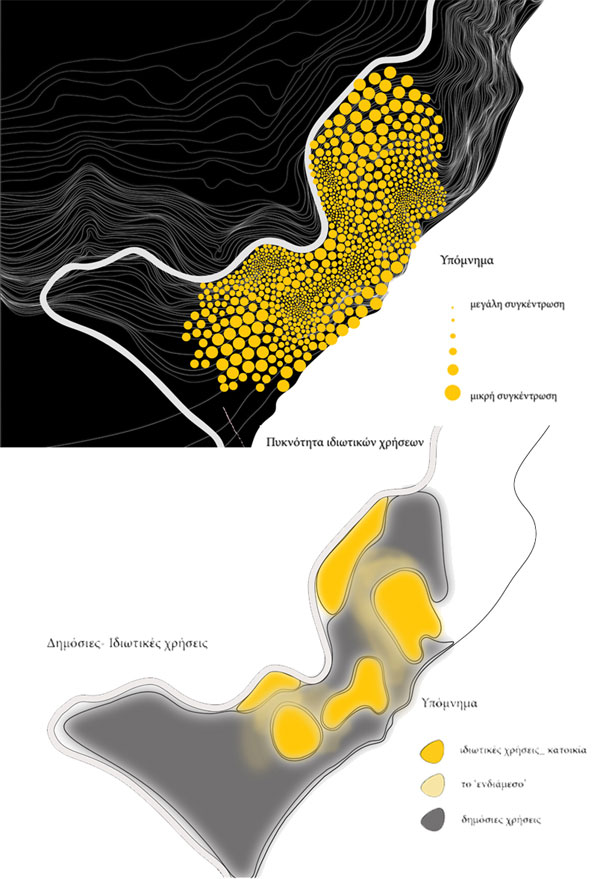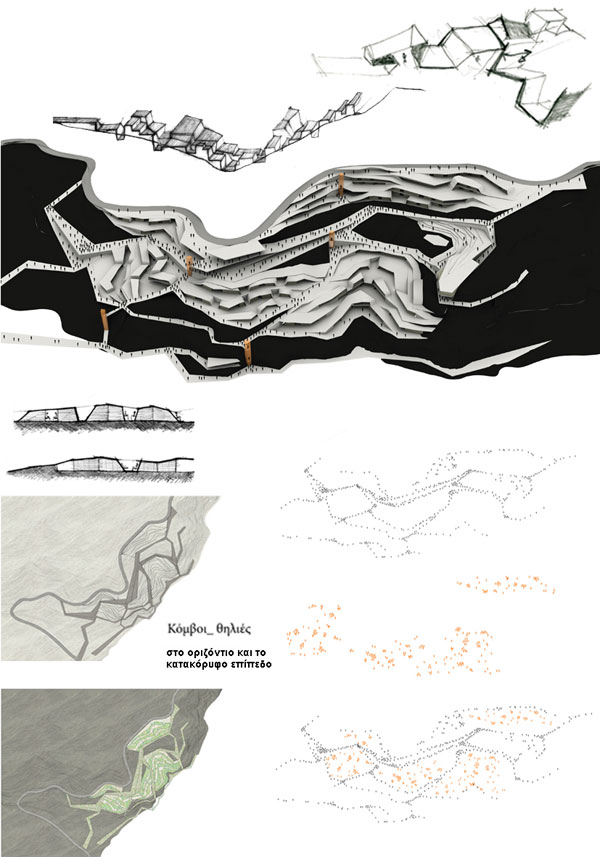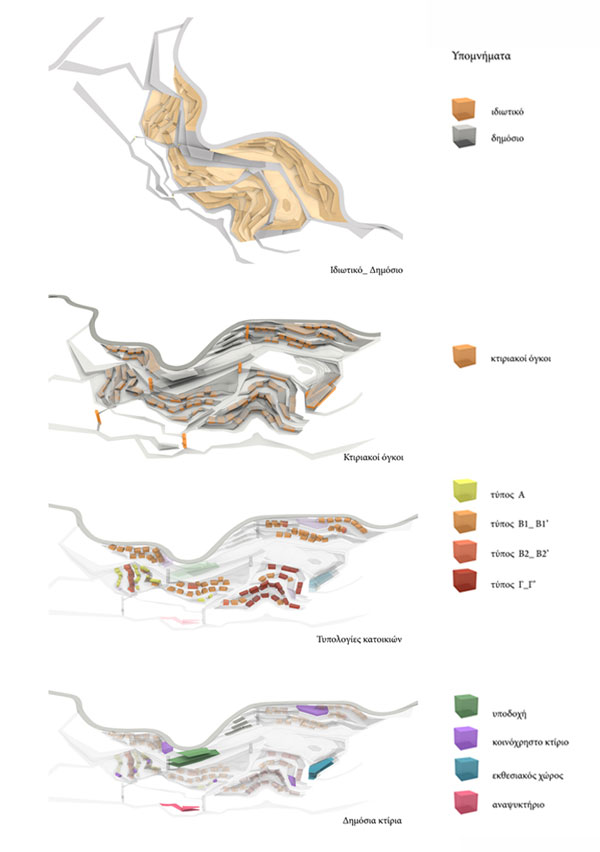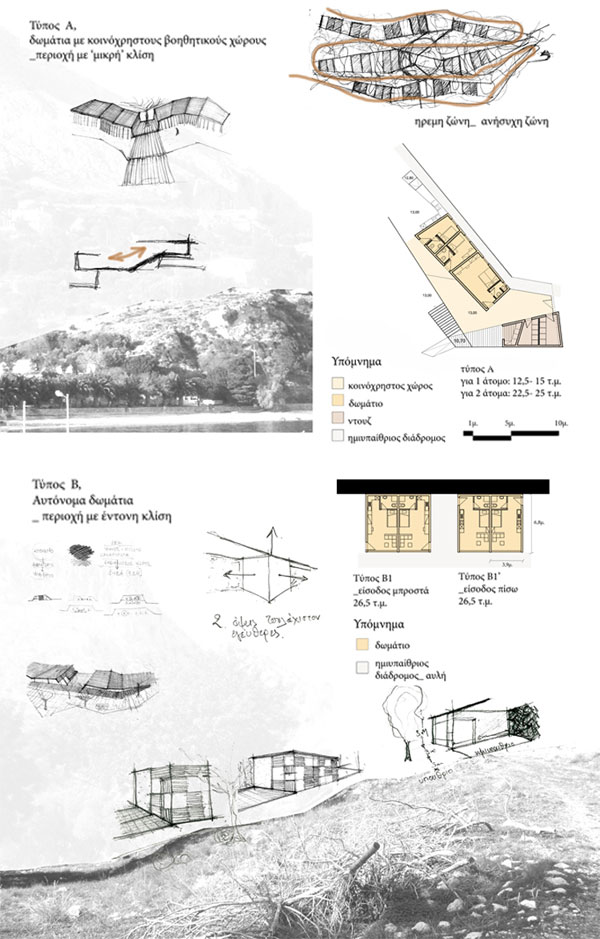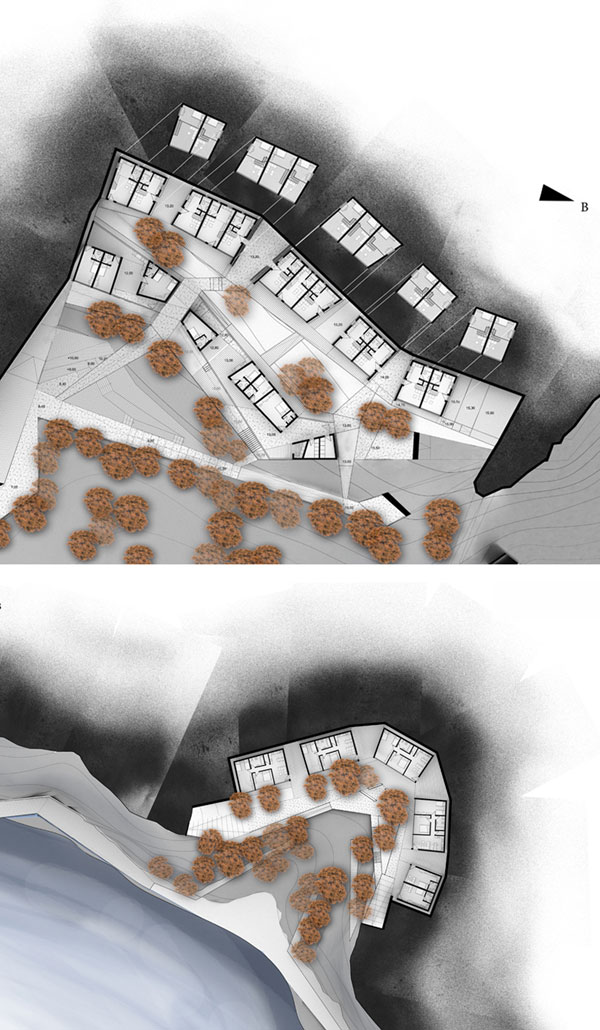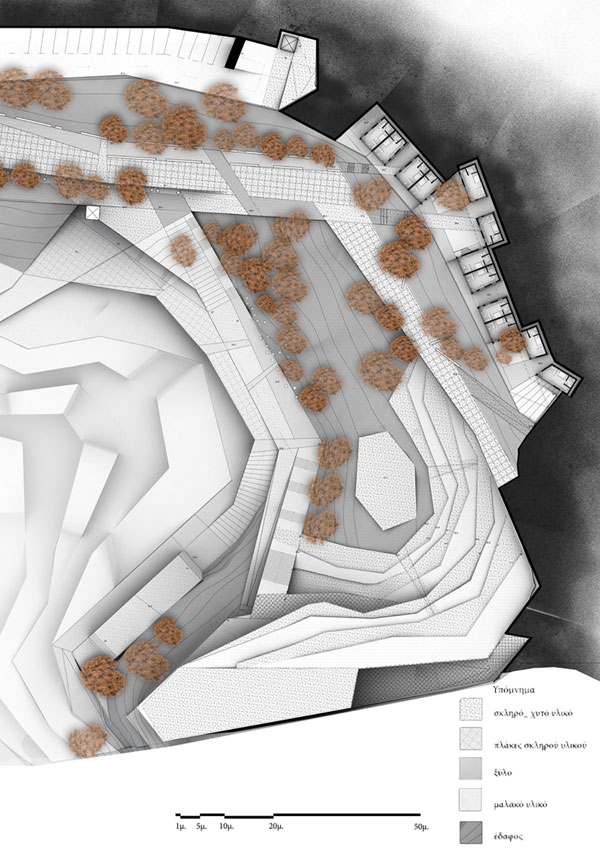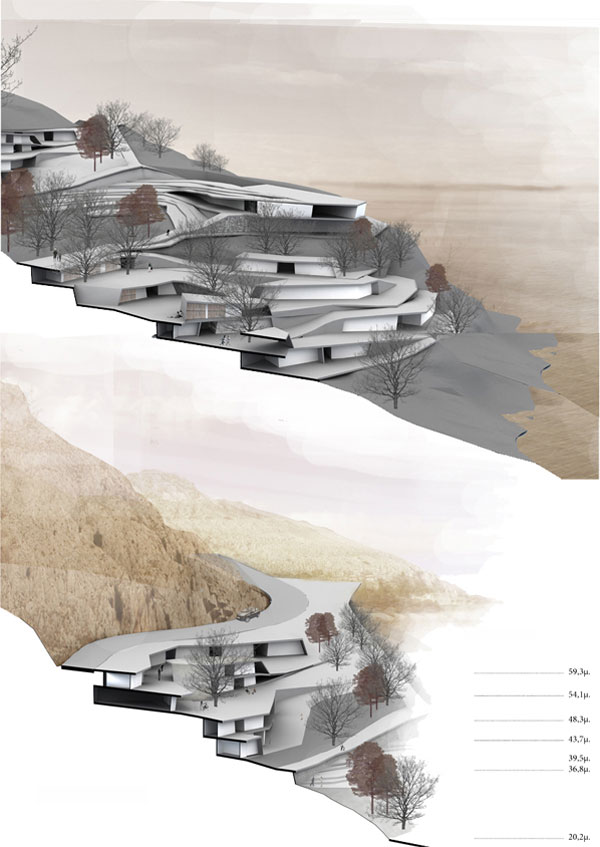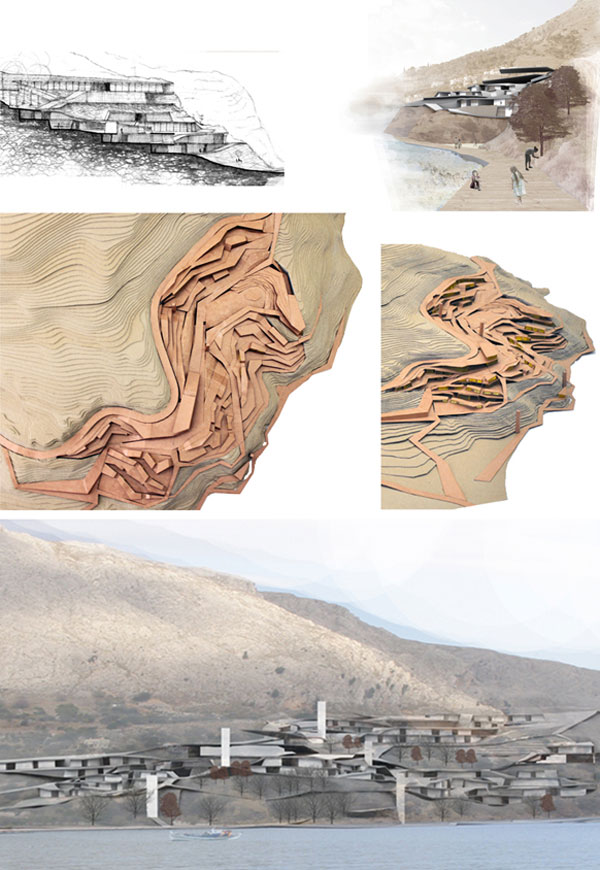STUDENTS PROJECTS
2010
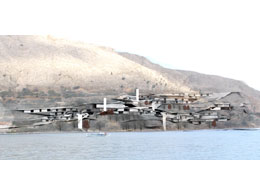
01 March, 2011
By the Multi-residence blocks to the City- Residence
Residences for young people in Chios.
Student: Nikos Nikolis, Anthi Skoupra, Hvi Dova, Konstantinos Spiridonidis
Supervisors' names:
University: Aristotle University of Thessaloniki
Date of presentation: October 2010
Aim of the study
Noting the absolute separation of public and private life in contemporary cities, our thesis project proposes the subversion of the strict boundaries between public and private space, focusing on the "blurring" of their limits, through the relationship of the built space with the ground.
The compact city blocks with the strictly defined borders, force the distinction of the private- interior space from the public - outdoor and foreign space. The quality of the "threshold", as an area of transition between the two above situations, is lost.
In our project, we are focusing in the experimentation and the production of intermediate spaces between the public and private, the "indoor" and the "outdoor", the built and natural, which encourage the spontaneous use of public space and facilitate human interaction and contact.
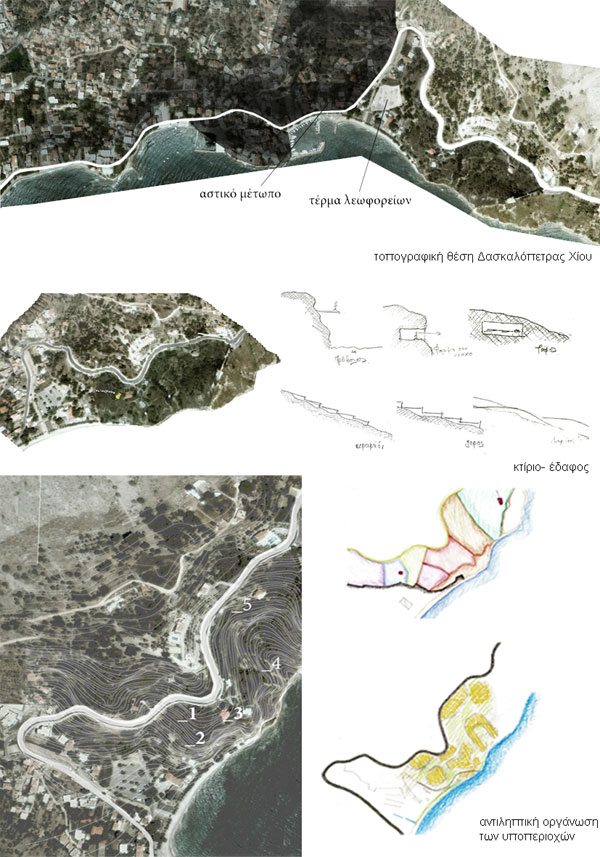
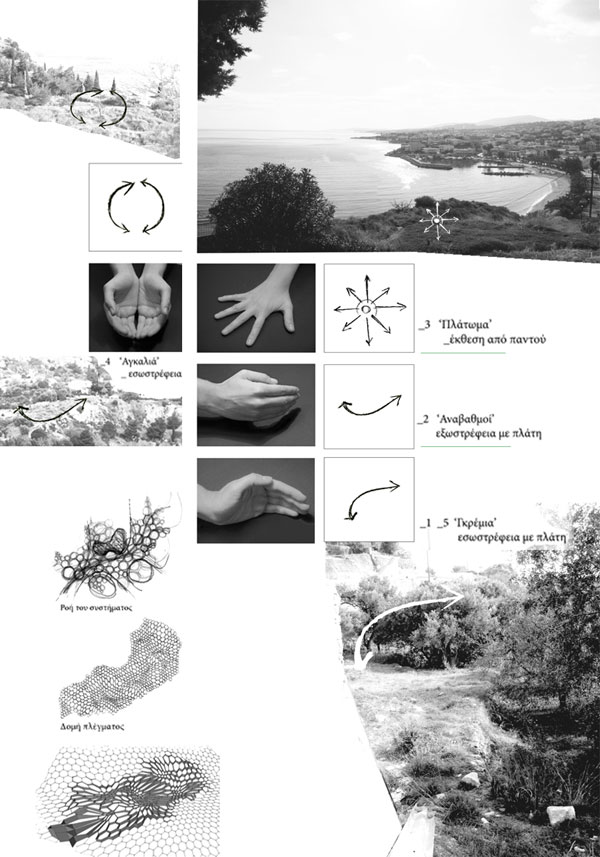
Description of the proposal
The selected area for the creation of this different type of urban space is Daskalopetra of Chios. Located on the outskirts of the city, 15 kilometers from its center, it is in contact with the urban fabric of Vrontados and the city's bus terminal, and in front of the seaside. Considering the region as an imminent expansion of the city, we propose a new residential area for young people, in which public space is transformed into an urban milieu, weaving through a network of public, private and intermediate spaces. The choice of a strongly inclined slope in an idyllic location introduces the issue of incorporation into the landscape, not in a romantic way of gentle respect, but with the dynamic reproduction of "natural" qualities of a build-up environment.
The "closeness" to nature is not treated with the nostalgic return to the structures of the past, but the building is shaped together with the ground in a dynamic way, ceilings become walls, walls ground and, through this game, space becomes flexible, transitions diverse and the free use of the space turns into a challenge. For this reason also, the residences are created for young people, who seek for a greater freedom of movement, variability and adaptability.
The representation of space as a soft network of public and private spaces, with variable density reflects the intensity of activities in each region and the flow from one area to another. The allocation of public or private areas to the whole area is based on our perceptional sense of each region, its relationship with the urban fabric, the terrain and the sea.
In the case of private areas the intensity of activities is low, the density of built space high, so the permeability of the regions low, while in the case of the public, the intensity of activity increased, the density of built space lower and the permeability in the region higher. In the diagram below, the size of the disks is proportional to the intensity of activity, while the density of placement increases while the privacy of the area increases.
Subsequently, proceeding to the spatial form of the system, zigzag lines, following the elevation contours, form a network of nodes and loops in the horizontal and the vertical dimension.
The loops receive the residences, which are distributed in them, according to their character and the "feeling" of each sub-region. The loops of housing are encircled, supported and connected through routes of the public. Emphasis is given to the transitional areas and the nodes, where vertical connections and public uses are placed.
We propose 3 types of residences
one with shared supporting facilities (kitchens- bathrooms)
one of autonomous single- residences
a type of family housing
The first typology with the common facilities, is allocated to the gentle slopes of the region, most exposed to the public and with a strong visual relationship with the urban fabric. The relatively gentle slope allows housing with two side openings. The ground consists of "lifts" and "quiet" spaces alternately. The residences are placed beneath the lifts and the quiet strips serve as communal spaces of the residences, where the entrances are found. The roofs of buildings convert to sloping walls, roofs and either become one with the ground, or rise up again to create new volumes of buildings. In this way the distinction between ground and the building is lost and the limits between public and private space are not clear.
The second typology of autonomous single- residences is located in the highly inclined slopes and turns the facades of the residences towards the view. Also in this case, each house has two "free" facades, the front and one of the sides. This is achieved by the presence of lateral semi-open spaces, each of which provides entry into 2 dwellings.
The third category of family housing is located in the most "enclosed" area, where the terrain hugs the residences and a sense of security and proximity to the sea makes it ideal for a young family.
Continuous public trails provide the vertical connections in the area, converted into ramps and staircase connections in smaller scale. Elevators are placed to the most important public nodes. The central route allows access to vehicles in emergent situations, a parking area and a bus stop next to the road allow vehicular access to the region.
The "system" maintains a balance in the distribution of public and private space and has a higher density from the side of the existing urban fabric and gradual dilution to the rural part from the other side. This introduces the idea of a possible further expansion in the same way, or it can even be applied to another "marginal" area.
